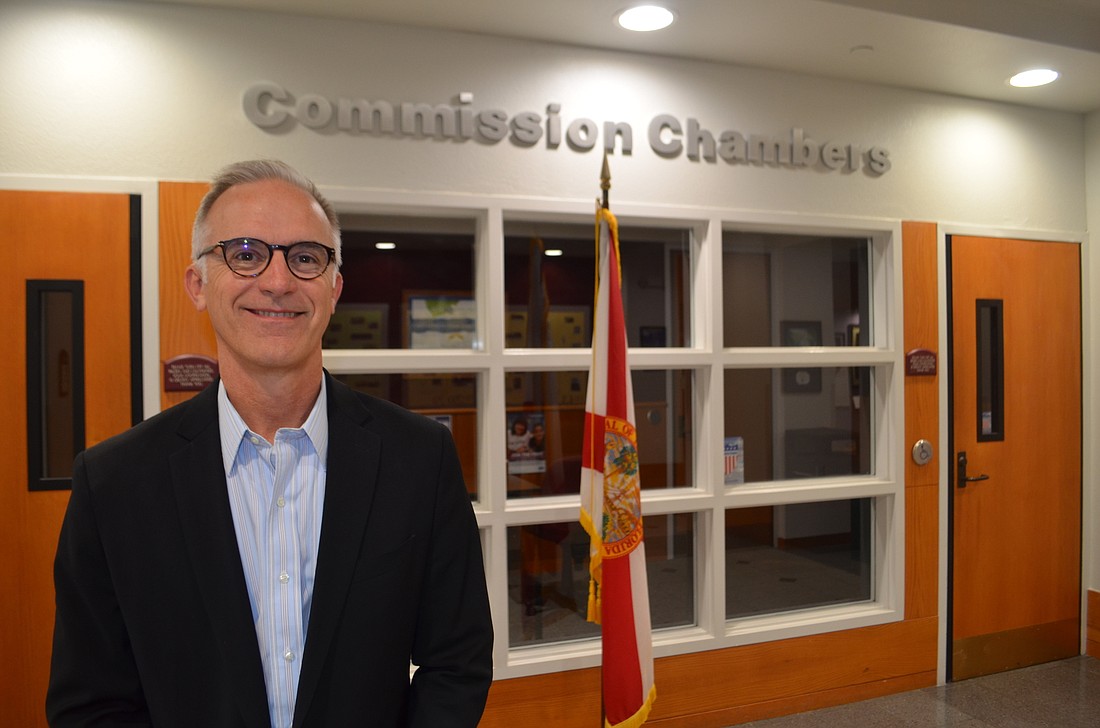- April 14, 2025
-
-
Loading

Loading

It’s still unclear what will ultimately be built on a swath of city-owned bayfront land near the Van Wezel Performing Arts Hall — or if the city will approve any bayfront redevelopment plan at all.
Already, though, the independent group producing a master plan for the 53-acre tract has begun reaching out to officials to discuss possible financing strategies for a project that would likely cost hundreds of millions of dollars.
Representatives for The Bay Sarasota hope to produce a final proposal for redeveloping the bayfront by September. That will include plans for paying for any improvements. So, as the organization pursues a singular community-backed vision for the property, it’s also researching funding mechanisms.
This week, The Bay Managing Director Bill Waddill appeared at County Commission meetings to discuss one of those funding mechanisms. Waddill wants the county to consider the possibility of creating a tax increment financing district around the bayfront site, which would infuse some county funds into the development of that land.
Tax increment financing is a mechanism that collects increases in property tax revenue within the boundaries of a given district. Governments can establish a baseline year, and any new property tax money generated above that baseline would be steered into the TIF fund.
“The idea is simply that the improvements we’re doing will create value on the real estate next door, and we’re recycling a portion of those property taxes back into our project for some period of time to help pay for it,” Waddill said. “In my mind, it’s a fair, reasonable way to pay for one slice of the improvements in a project like this, and it’s what a lot of communities have done.”
The county has established TIF funding sources in the past. That includes the downtown Sarasota Community Redevelopment Area, created in 1986. The downtown CRA expired in 2016. At the time, the city pushed for an extension to the CRA, and the county expressed a reticence to make any future CRA commitments.
At Wednesday’s commission meeting, staff presented an alternate TIF funding mechanism: a home rule tax increment district. Planning Director Matt Osterhoudt said the tax increment district would give the county more flexibility than a CRA. The county would have the ability to dictate the governing structure of the district, and the district would not be limited to slum and blighted areas.
Commissioners expressed interest in further exploring the possibility of a tax increment district. Board members said they felt it more honestly reflected the plans for redevelopment than a CRA would.
“I was always amazed at how many classy areas didn’t mind calling themselves a slum to get taxpayer dollars,” Commissioner Nancy Detert said.
The board directed staff to continue conversations with The Bay about a tax increment district. Waddill said the TIF funding was just one of several options available. Still, he said it could provide significant revenue, considering plans for redevelopment in the area surrounding the bayfront.
Waddill said The Bay would explore other sources of public funding, including a potential bond referendum through the city and grants at every level of government. He said no decisions have been made yet, but The Bay will be moving quickly on funding options as the possible scope of a project comes into focus.
The Bay will hold updates on the planning process with consultant Sasaki the week of May 21. At that point, Waddill said, the group hopes to have a better sense of the expenses associated with the project. Waddill said estimates from the Van Wezel put the cost of a new performing arts facility between $250 million and $290 million. The Bay anticipates the rest of the development will cost less than that.
“All that said, you’re still looking at a project that’s several hundred million dollars,” Waddill said. “The timing of that, the phasing of that, is not clear yet.”
Already, the group has ruled out one funding option other communities have relied on: using portions of public land for intense private development. The final proposal will likely include food and beverage establishments on-site as a potential revenue source, and The Bay will seek philanthropic contributions and other private funding.
Still, the community’s interest in a lightly developed property with parkland and open space will likely lead to a heavier reliance on public funds.
“We’re retaining all 53 acres in public ownership,” Waddill said. “That means we have to look at other ways to pay for it.”